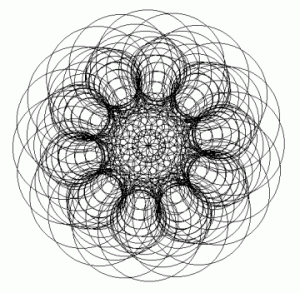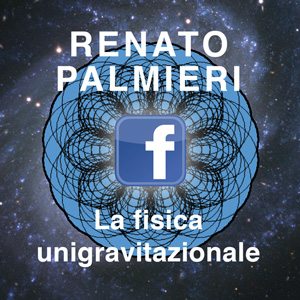Chapter 2.3 “Liquid electricity” and “cold fusion”: what modern physics sees, but does not understand …
The assumption of the previous chapter is that it is not true that the electrons (or protons) repel each other. Indeed, the contrary is true: the electrons (or protons) attract each other.
We state the thesis in gravitational terms:
At relatively large mutual distances and at their high speeds, on the fundamental attraction among electrons (or protons) a general movement to escape to the outside prevails, similar – for each electron (or proton) towards all others – to that of the comet of the first argument with respect to the Sun (see the previous chapter).
To have the evidence that this is true, it will have to occur, by reducing, with special care, mutual distances and speeds among the electrons (or protons), that they give priority to the natural attractive tendency, by joining rather than escape.
Well, this precisely occurred several times already in the experiments reported by all the media with noise, but no physicist has never taken the right theoretical consequences. One could be ironic again saying that the contemporary physical thought, to see what is not, does not see what it is.
1) In 1976 it was announced (LE SCIENZE n. 98, October 1976, article by Gordon A. Thomas) that electrons trapped at low temperature in the grid of a crystal of germanium had coagulated, forming the “droplets” which were said of “liquid electricity”.
2) In 1989 protons trapped at low temperature in the grid of crystals of palladium or titanium had fused into nuclei of helium or tritium, creating the “scandal” of cold fusion in the global scientific community.
In both cases, in perfectly similar conditions, electrons and protons show not to notice the existence of an “electrostatic barrier”. But the two episodes are very significant for methods of interpretation, verification and use of the results of research by contemporary scientific environment. To my knowledge, only one physicist – Giuliano Preparata from University of Milan – took the precise correlation between the two phenomena, although he reads it in the same wrong key as Thomas about the liquid electricity.
The correct analysis of both phenomena is the same and it is simple. The crystal grid coercively shortens the distances between the particles (electrons or protons); the low temperature reduces their reciprocal speeds: the necessary result – gravitational – is the prevalence of events of mutual orbiting on the events of escape and therefore the particles (electrons or protons) are aggregated. From that you have, as a perfectly natural way, liquid electricity or cold fusion. The “electrostatic barrier” (or Coulomb’s) is a pure formality, without any real foundation. It is obvious that such an analysis does justice to all existing theories about electromagnetism. But let’s see what are the reactions in official circles, when a basic principle of “normal” science (as Kuhn calls it) falls. They are summarized as follows:
a) to invent any “ad hoc” explanation of the anomalous results of an experiment: that is, to try to put a patch;
b) willfully to deny the validity of the “outrageous” experiment;
c) to quiet the problem and try to forget it.
In fact, in the article mentioned by Thomas about liquid electricity (LE SCIENZE n. 98) the violation of the electrostatic barrier by the electrons is remedied with the original expedient of combining the electrons, negative, with “positively charged blanks” (textual ), so as not to admit that they are agglomerated together (title of the article: A liquid composed of electrons and holes). And Preparata, about cold fusion, finds nothing better than to overturn the explanation invented by Thomas, by combining protons, positive, with “holes”, obviously negative (PANORAMA n.1251, April 8, 1990). His merit is, however, to have validated, by its proper relationship, the reality of cold fusion.
Which, however, has suffered, over the years since 1989, all three obstructionistic techniques first remembered, despite the hundreds of confirmations came from experiments carried out in the world: the Italian Scaramuzzi even had patented the process. It is truly scandalous for three good reasons: it drops a pillar of modern theories; two chemists – Fleischmann and Pons – and not two physicists – discovered it; it is a “poor” fusion (some millions spending to achieve it), while the “hot” one is very rich: thousands of billions to build accelerators of ever more powerful and unnecessary particles. Fortunately, American Congress has blocked one of an estimated cost of 11 billion dollars, but two billion (three thousand billion lire) had already been thrown away
Electrons and protons have played a second colossal hoax to contemporary physics: the one of the perfect equality of “charge”, despite the diversity of “sign” and mass. It is naturally undeniable that the experimental measurement of this quantity (which we call the field intensity, instead of “charge”) gives an absolutely equal value for the electron and proton, but only because the “repulsive” force manifested by the two particles is recorded by means at a subatomic limit of field placed by nature at very different distances from the center of the particle: a much greater distance for the proton than for the electron, predetermined by the fact that the measurer instrument shall not exceed the limit of intensity that determines the events of gravitational escape (apparent “repulsion”) and whose value is necessarily the same in both measures. It is, so to speak, the gravitational gauge of the material instrument that pre-establishes the equality, which, therefore, does not relate to the intrinsic gravitational intensity of the two particles, obviously much greater in the proton.



